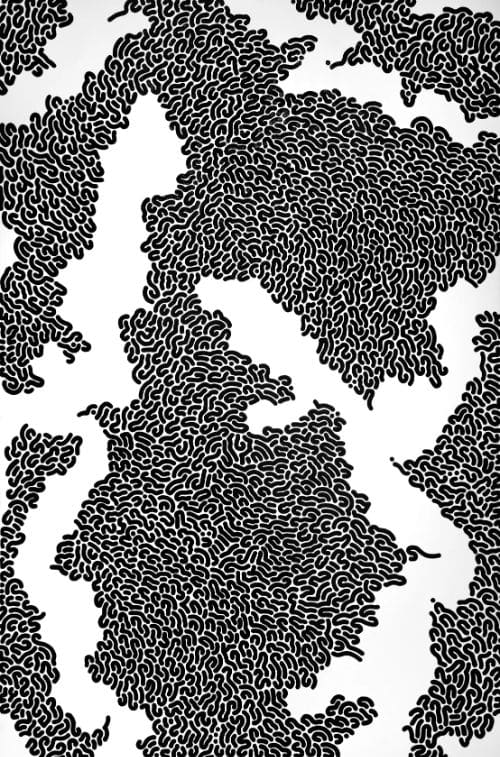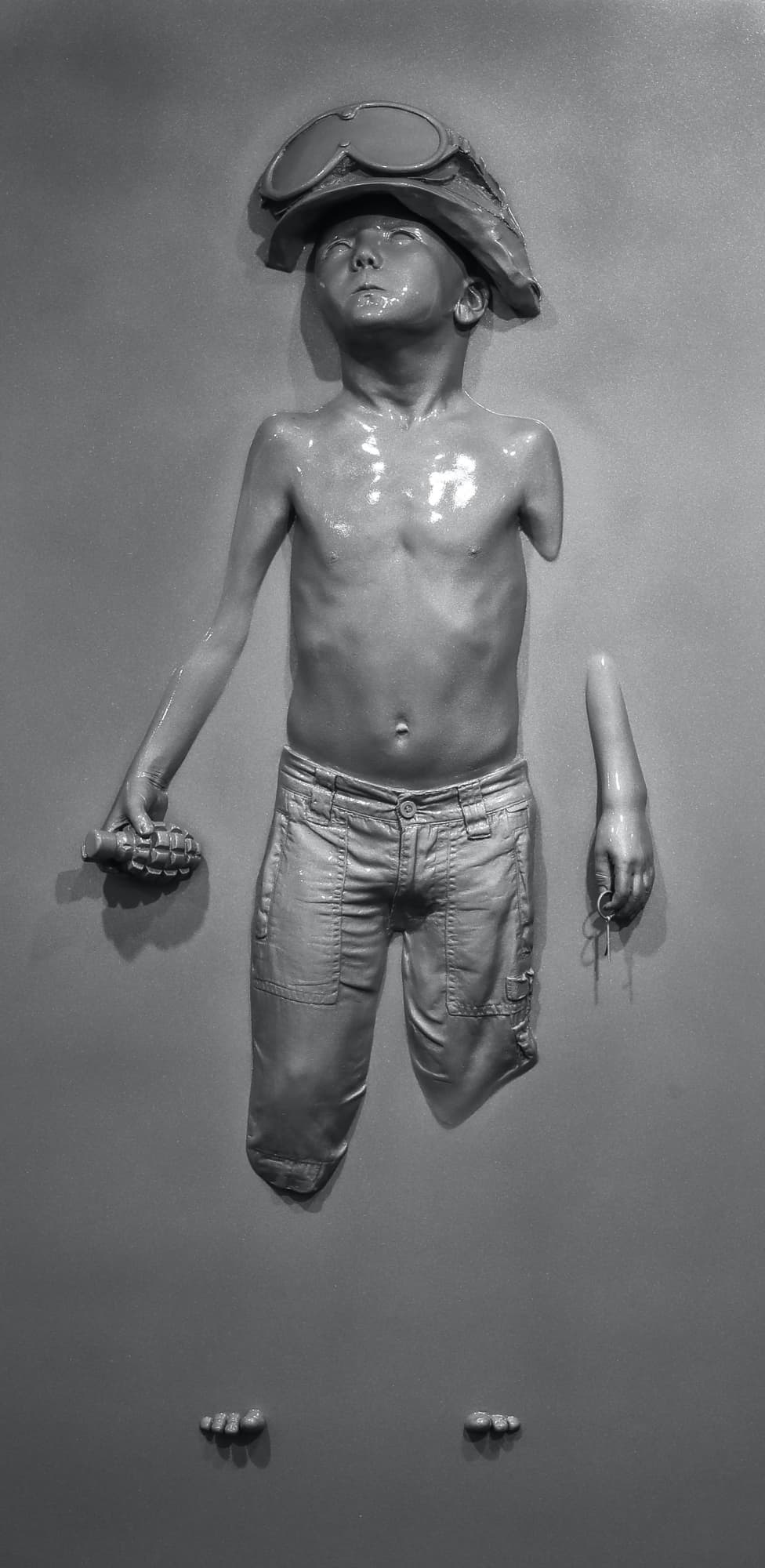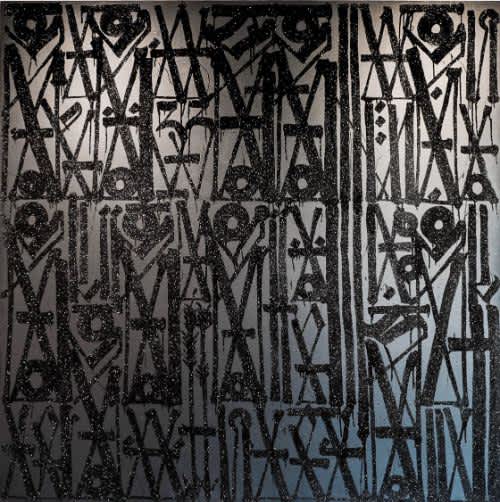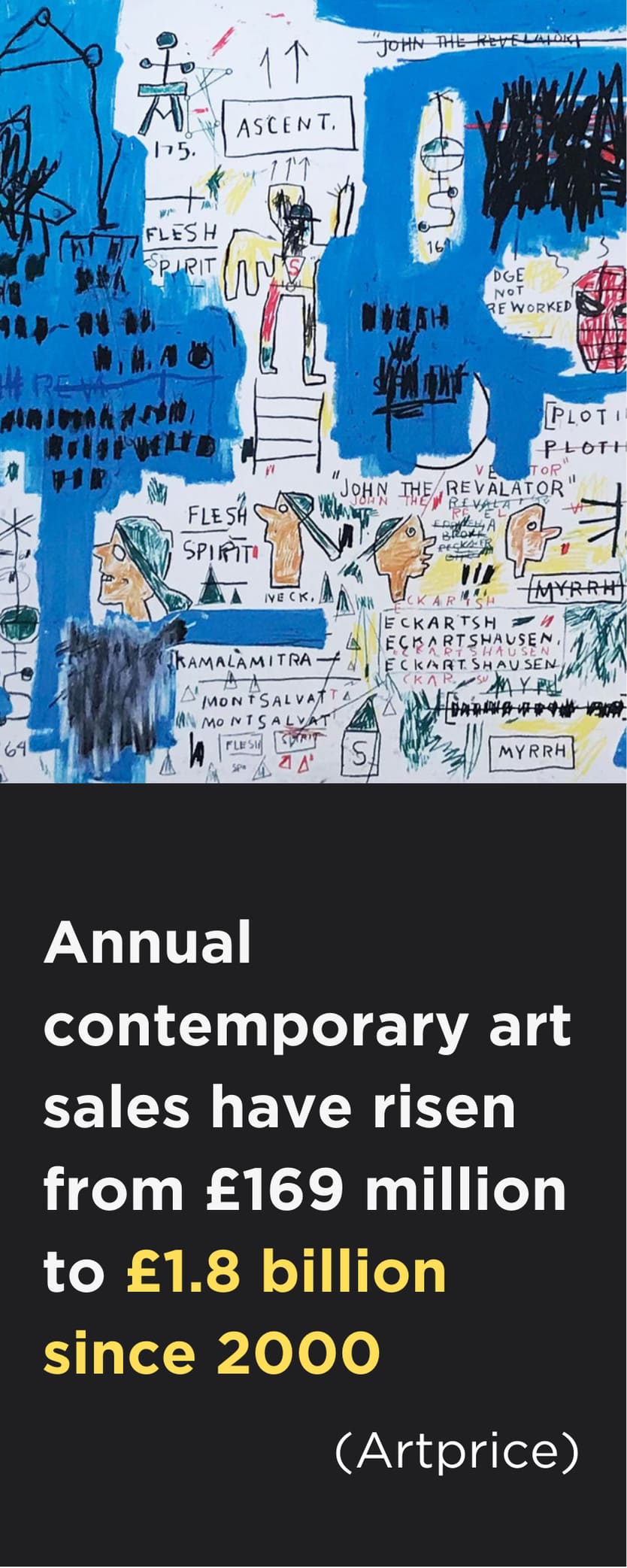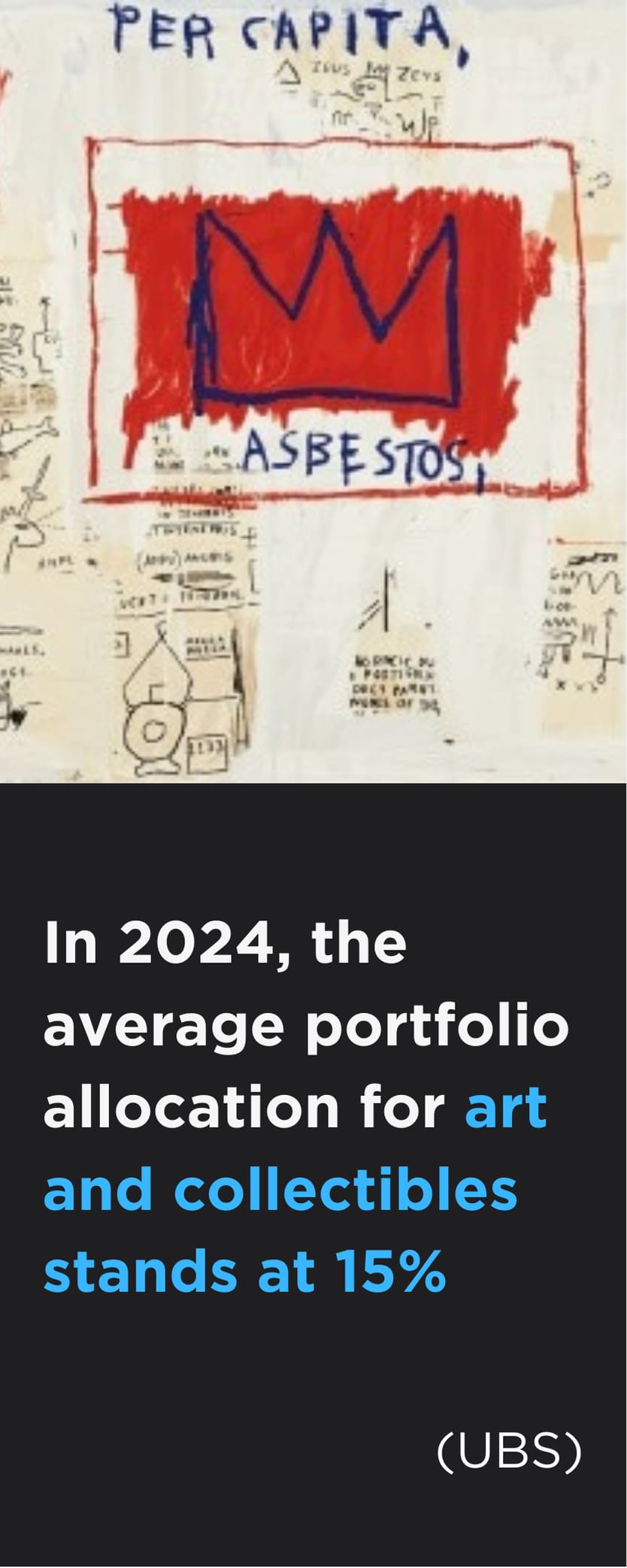Exploring the raw emotion and dynamic energy in monochrome art, we delve into the distinct monochrome artist personality. Their mastery of black and white creates compelling narratives and lasting impressions. Learn the six reasons why monochrome artwork's minimalist appeal remains timeless and continues to captivate art enthusiasts worldwide.
From the muted tones of 12th century grisaille to the psychedelic canvases of 1960s Op art, monochrome artwork has a long and distinguished history. We look at the reasons behind black and white art’s continued success and consider why the colourway has been consistently popular with artists and collectors throughout the ages.
TERRY O'NEILL, BRIGITTE BARDOT IN 'LES NOVICES', 1970
It draws attention to a work’s composition.
By limiting the palette of a work of art, the composition of the piece becomes central to the overall work. With the viewer no longer led by colour, the formation of the shapes and patterns leads the eye, guiding how the viewer experiences the artwork.
Although Lefty Out There creates multicoloured works, his monochrome paintings are an excellent example of this phenomenon. In Impios, his interlocking squiggles spread across the canvas as if multiplying like a living organism. Their seemingly sporadic arrangement is at once spontaneous and yet organised, with the juxtaposition between the two highlighting this paradox. Lefty achieves a certain dynamism normally realised by a vivid palette, through composition alone and undoubtedly the monochrome tones of the work allow this to happen.
It is impactful in its simplicity.
Although a monochromatic scale can focus the eye on the complexity of a work, black and white artwork can also be impactful in its simplicity and no artist seems to achieve this more successfully than British fine art photographer David Yarrow. Known for his photographs of both wildlife and narrative scenes, Yarrow often favours black and white photography reportedly noting that he uses the colourway to ‘amplify the narrative of the animals’, as well as to ‘create a certain timelessness’. By refraining from using colour, Yarrow creates atemporal images that are as minimalist as they are impactful.
It highlights the importance of sculptural form.
It is not only monochrome paintings and drawings that have stood the test of time but also sculpture. Although polychrome sculpture is vastly popular, their less vivid counterparts are also widely adored by critics and collectors. With a limited palette drawing attention to the sculptural form of the work, many artists favour solid colours when creating or collecting sculpture. One such artist is Schoony. With an illustrious thirty-year career in prosthetics and special-effects, Schoony transitioned from fashioning specular props to creating emotive fine art sculptures which he often renders in grey.
SCHOONY, PANEL BOY SOLDIER (GREY PRISMATIC), 2020
It captures raw emotion.
Another key attribute that has contributed to the ongoing success of black and white artwork is monochrome’s inexplicable potential to capture and express raw emotion. As previously noted, there is a certain timelessness to greyscale photography that evokes a sense of nostalgia, heightening emotion. In addition, the saturation and high contrast of a monochromatic image often draws the viewers’ eyes to the details; a small wrinkle or glistening eye that may have been overlooked when shot in colour. British photographer Andy Gotts often works in black and white capturing the person behind some of world’s most famous personas.
ANDY GOTTS, TOM JONES PORTRAIT
It enhances the message of a work.
Sometimes the simplicity of a monochrome artwork can help enhance the social or political message behind a work, which is a technique street artist Banksy often employs when creating his work. Although many of his murals are rendered in black and white for efficiency, as graffiti is still illegal, and the less colour in the work the quicker it takes to execute, lots of his print releases are also executed with minimal colour which is an artistic choice, rather than a logistical one. By creating work with a small range of colours, the subject of the work becomes central to the piece, promoting the socio-political message with clarity.
BANKSY, CHOOSE YOUR WEAPON (WHITE), 2010
A pared back palette accentuates the texture of an artwork.
Like removing one of the five senses, by removing colour from an artwork, other elements are accentuated, for example, texture. Whether a fine varnish, matte or even diamond dust, little attention is often paid to the textural make-up of a canvas and the materials contributing to this. RETNA’s multi-material approach to Everyone’s Looking For Something sees the artist layer the canvas with oil paint, enamel, acrylic and crystalline in order to achieve the desired finish. The exclusively greyscale palette of the work draws attention to the various textures and materials on the canvas.


